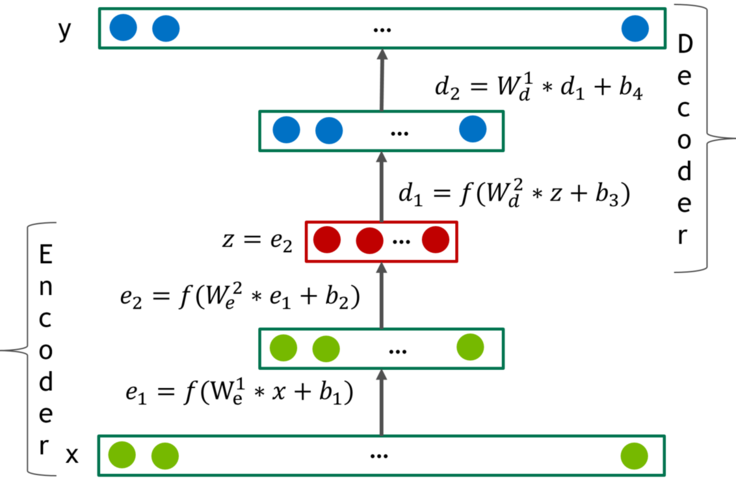This is not an official NVIDIA product. It is a research project described in: "Training Deep AutoEncoders for Collaborative Filtering"(https://arxiv.org/abs/1708.01715)
The model is based on deep AutoEncoders.
- Python 3.6
- Pytorch
- CUDA (recommended version is 8.0)
The code is intended to run on GPU. Last test can take a minute or two.
$ python -m unittest test/data_layer_tests.py
$ python -m unittest test/test_model.py
Note: Run all these commands within your DeepRecommender folder
- Download from here into your
DeepRecommenderfolder
$ tar -xvf nf_prize_dataset.tar.gz
$ tar -xf download/training_set.tar
$ python ./data_utils/netflix_data_convert.py training_set Netflix
| Dataset | Netflix 3 months | Netflix 6 months | Netflix 1 year | Netflix full |
|---|---|---|---|---|
| Ratings train | 13,675,402 | 29,179,009 | 41,451,832 | 98,074,901 |
| Users train | 311,315 | 390,795 | 345,855 | 477,412 |
| Items train | 17,736 | 17,757 | 16,907 | 17,768 |
| Time range train | 2005-09-01 to 2005-11-31 | 2005-06-01 to 2005-11-31 | 2004-06-01 to 2005-05-31 | 1999-12-01 to 2005-11-31 |
| -------- | ---------------- | ----------- | ------------ | |
| Ratings test | 2,082,559 | 2,175,535 | 3,888,684 | 2,250,481 |
| Users test | 160,906 | 169,541 | 197,951 | 173,482 |
| Items test | 17,261 | 17,290 | 16,506 | 17,305 |
| Time range test | 2005-12-01 to 2005-12-31 | 2005-12-01 to 2005-12-31 | 2005-06-01 to 2005-06-31 | 2005-12-01 to 2005-12-31 |
In this example, the model will be trained for 12 epochs. In paper we train for 102.
python run.py --gpu_ids 0 \
--path_to_train_data Netflix/NF_TRAIN \
--path_to_eval_data Netflix/NF_VALID \
--hidden_layers 512,512,1024 \
--non_linearity_type selu \
--batch_size 128 \
--logdir model_save \
--drop_prob 0.8 \
--optimizer momentum \
--lr 0.005 \
--weight_decay 0 \
--aug_step 1 \
--noise_prob 0 \
--num_epochs 12 \
--summary_frequency 1000
Note that you can run Tensorboard in parallel
$ tensorboard --logdir=model_save
python infer.py \
--path_to_train_data Netflix/NF_TRAIN \
--path_to_eval_data Netflix/NF_TEST \
--hidden_layers 512,512,1024 \
--non_linearity_type selu \
--save_path model_save/model.epoch_11 \
--drop_prob 0.8 \
--predictions_path preds.txt
python compute_RMSE.py --path_to_predictions=preds.txt
After 12 epochs you should get RMSE around 0.927. Train longer to get below 0.92
It should be possible to achieve the following results. Iterative output re-feeding should be applied once during each iteration.
(exact numbers will vary due to randomization)
| DataSet | RMSE | Model Architecture |
|---|---|---|
| Netflix 3 months | 0.9373 | n,128,256,256,dp(0.65),256,128,n |
| Netflix 6 months | 0.9207 | n,256,256,512,dp(0.8),256,256,n |
| Netflix 1 year | 0.9225 | n,256,256,512,dp(0.8),256,256,n |
| Netflix full | 0.9099 | n,512,512,1024,dp(0.8),512,512,n |
